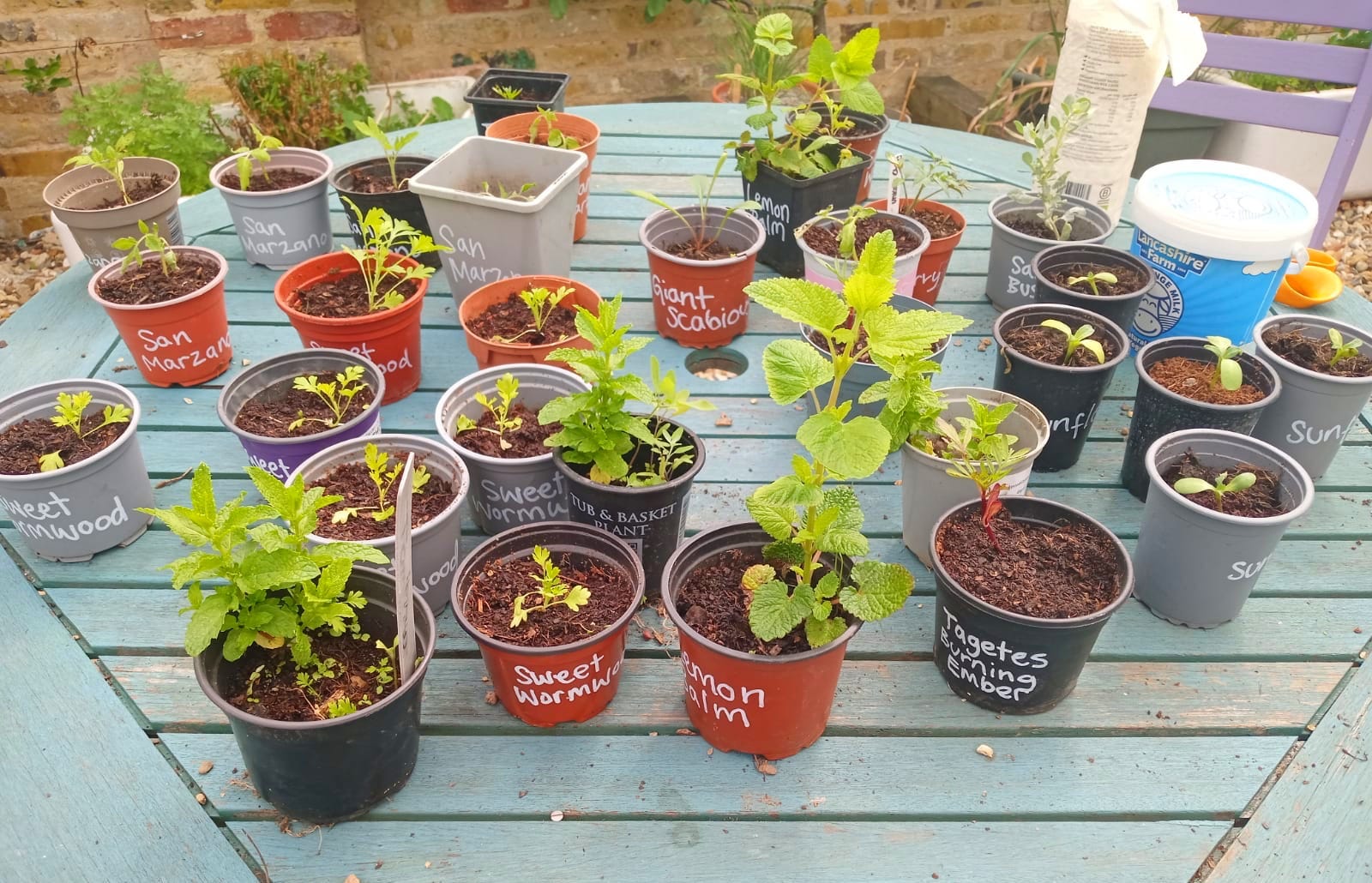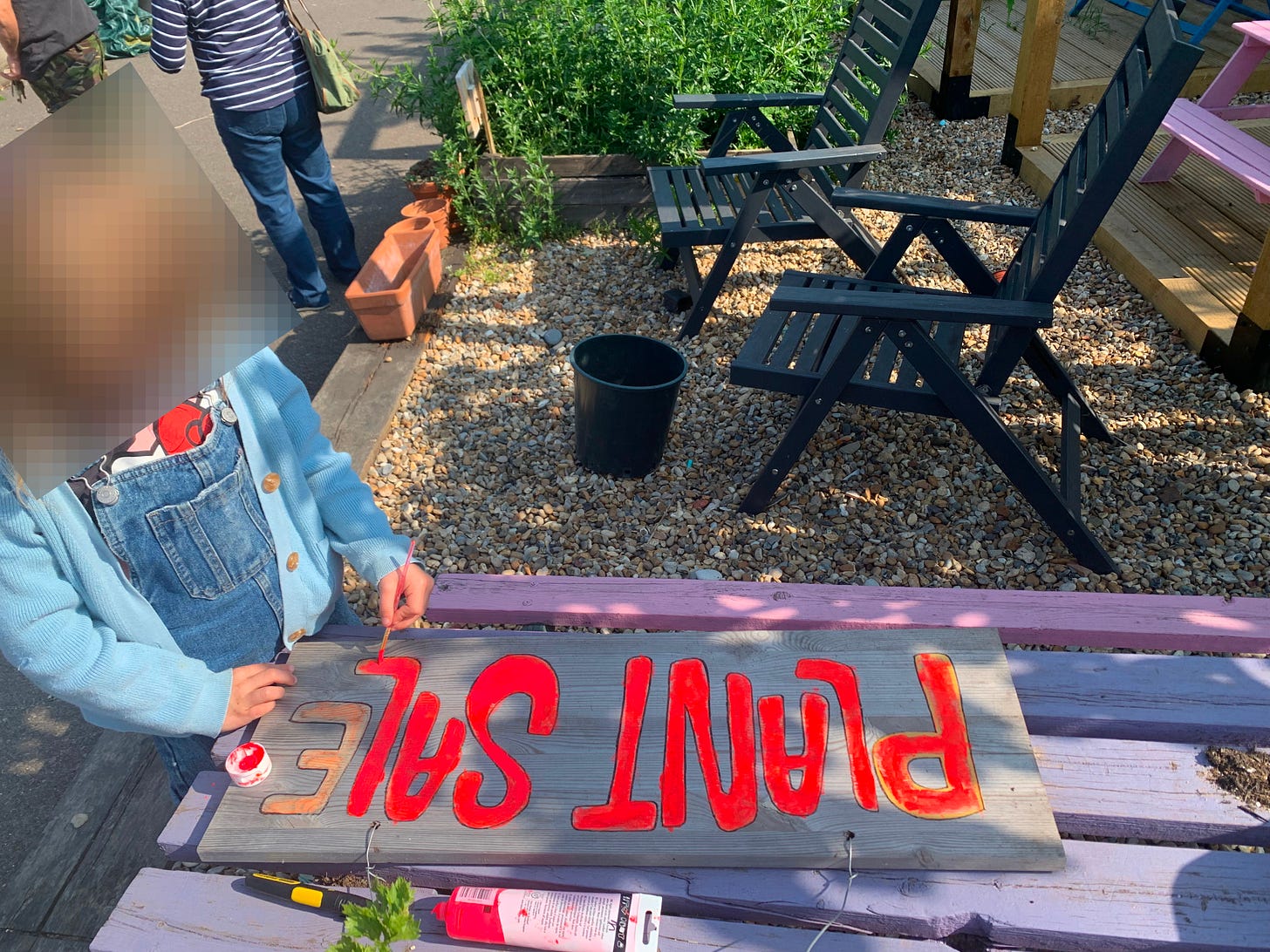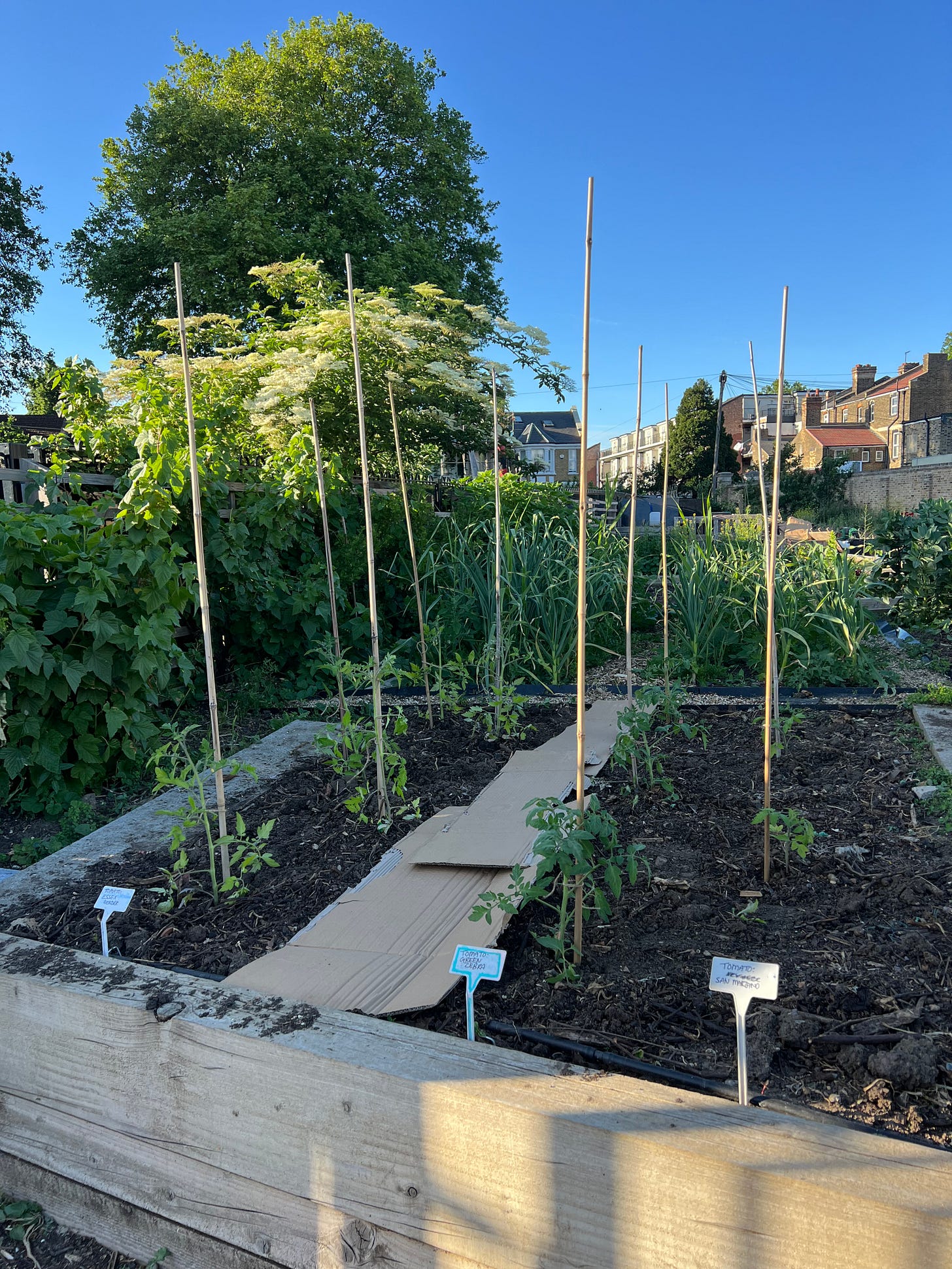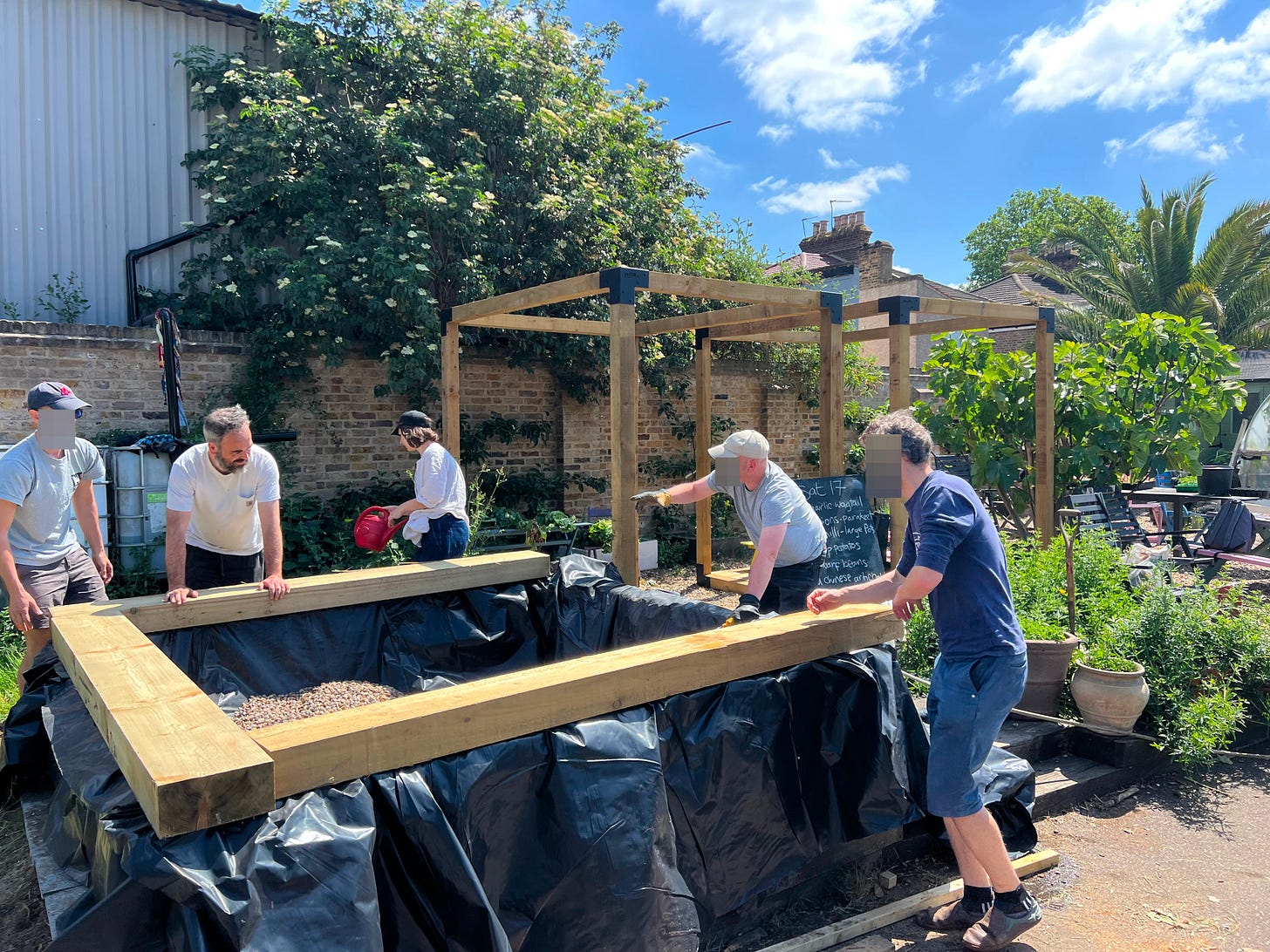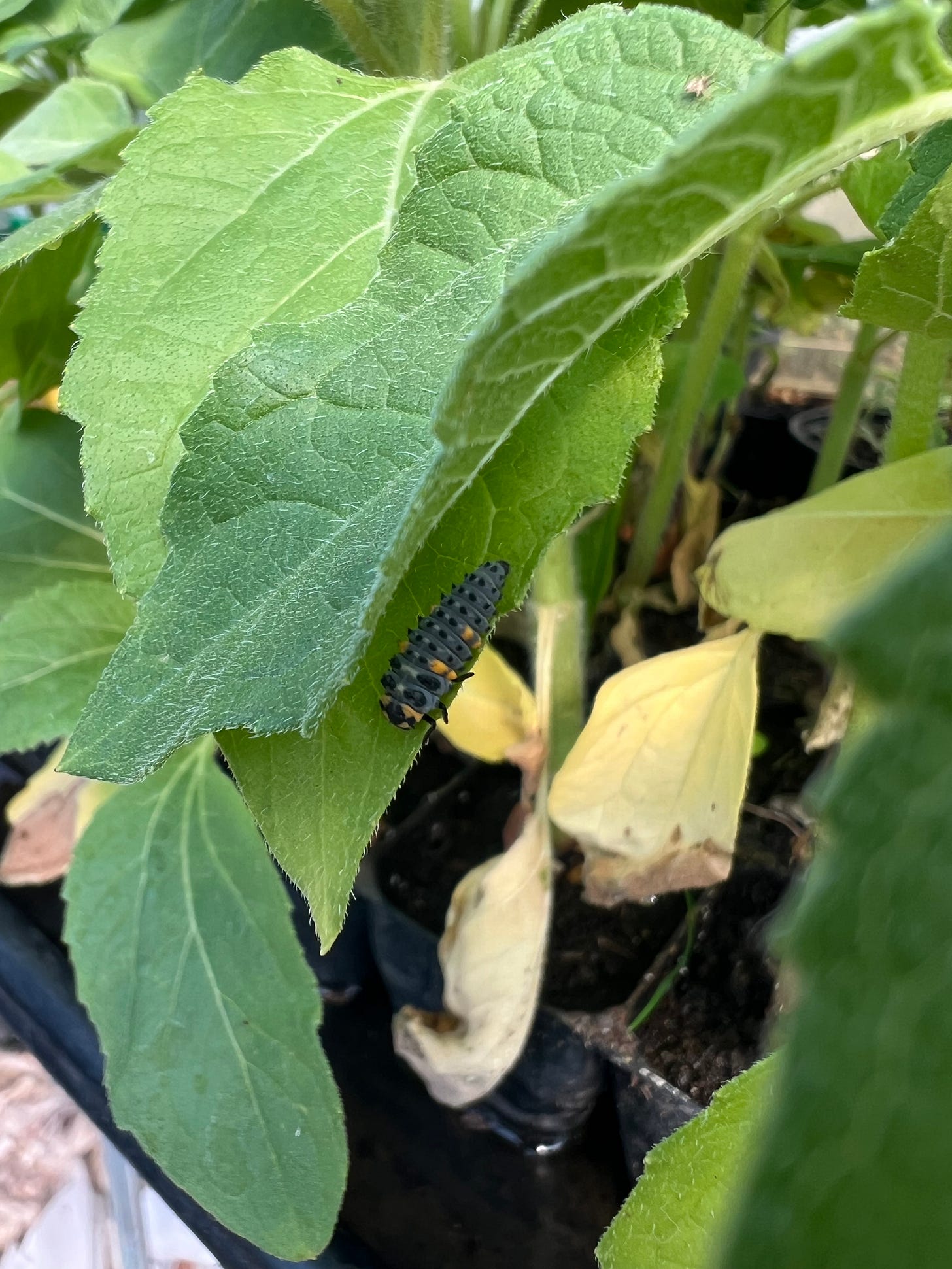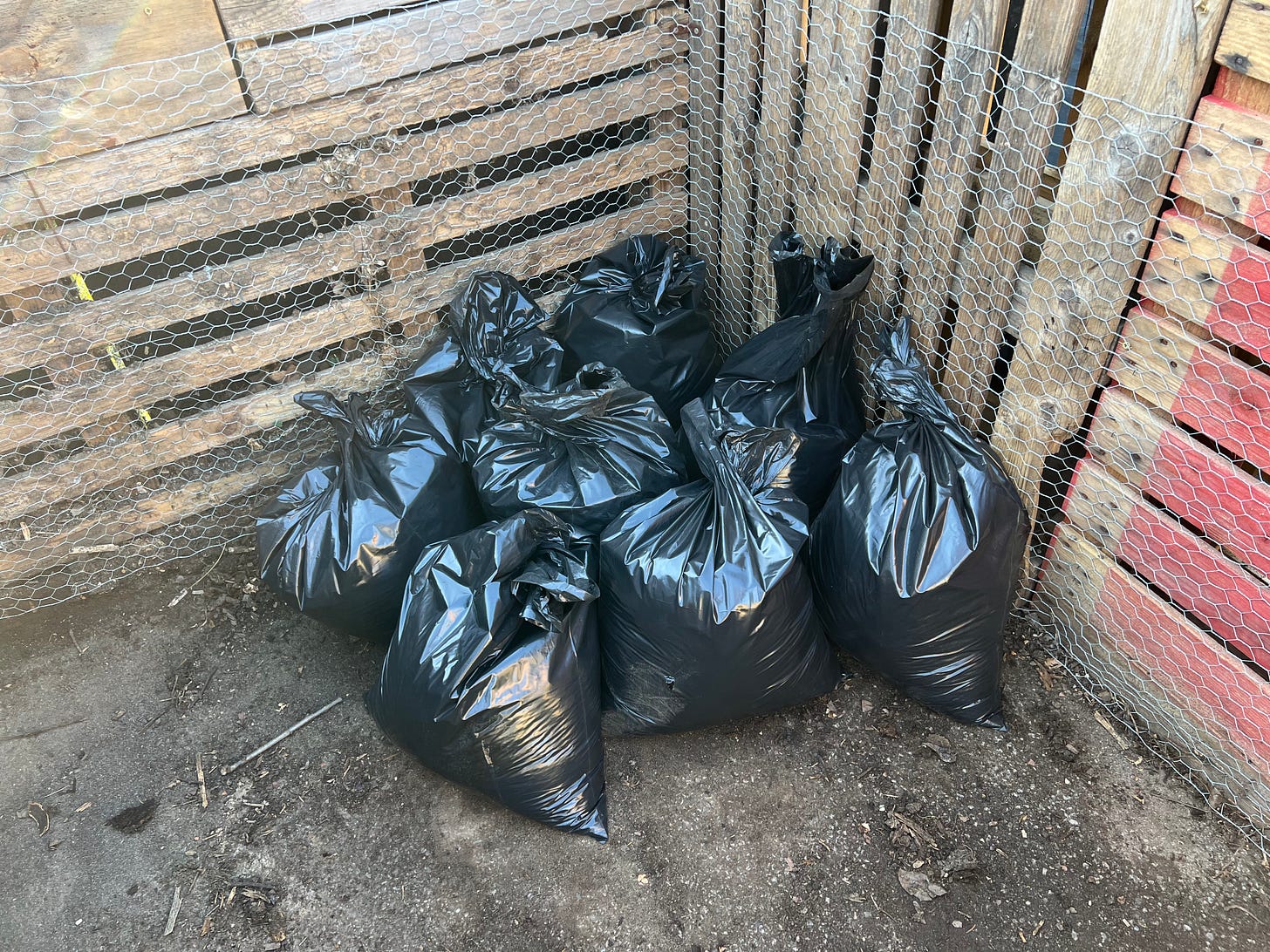In The Month Of May
A beautiful month, by any standards, though the sun was truly out in force and rain not so. We kept an eye on our delicate young leaves, shared the plant love, and made good on our Biodiversity Plan.
May And The Poets There is May in books forever; May will part from Spenser never; May's in Milton, May's in Prior, May's in Chaucer, Thomson, Dyer; May's in all the Italian books:— She has old and modern nooks, Where she sleeps with nymphs and elves, In happy places they call shelves, And will rise and dress your rooms With a drapery thick with blooms. Come, ye rains, then if ye will, May's at home, and with me still; But come rather, thou, good weather, And find us in the fields together. - Leigh Hunt, 1816
First plant sale of the season
We hold plant sales when possible to help support the garden and spread our love of growing food and flowers within our local community, operating on a “£2 suggestion / Pay What You Can” basis. We love plant sales as they’re a wonderful way to meet members of the community, make gardening more accessible, and get everyone involved in the preparation and process of sharing our lovingly-tended green things!

It was a perfect Saturday, not too cold and not too hot, the sun joining in without being oppressive. On sale were sunflowers, tomatoes, Sweet Wormwood, Tagetes (flowering plants from the marigold family), bee-favourite verbena, and more.
All the funds raised go straight back to the garden, including seeds and materials for future plant sales, becoming a self-sustaining regular event that brings people together and helps us share the gardening experience with the community even more.

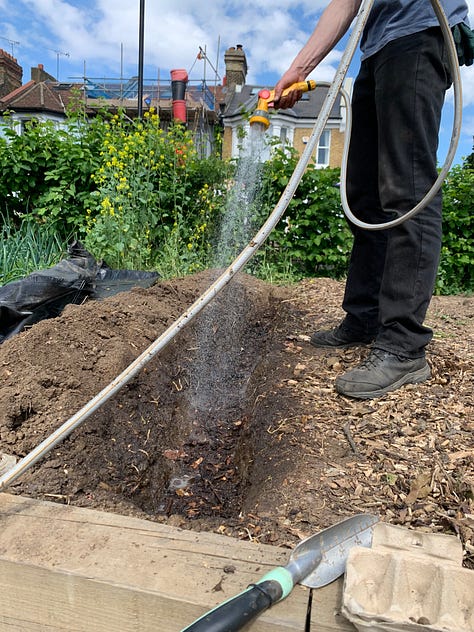
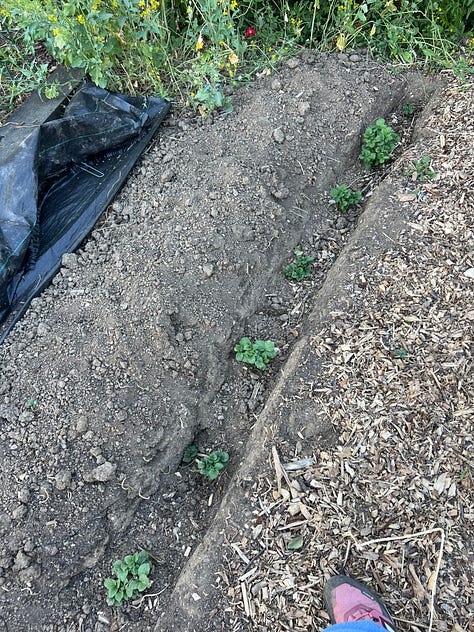
In the trenches
May saw us planting out chitted spuds (no, that’s not an insult). We went with “Casablanca” and “Lady Christl”. There must have been a rush on the much adored and sought-after “Ratte” variety as it couldn’t be bought anywhere.
The process of potato growing is an interesting one; pop them in, let them leaf up, then bury them again, repeatedly (a process called “mounding up”). Each layer will produce new spuds! Clever.
We also planted out some sweet potato “slips” in the planters alongside the wildflower meadow. We chose the varieties “Erato Vineland” and “Erato White”.
Unlike regular chitted (sprouting seed) potatoes that can be thrown whole into the ground, sweet potatoes need to be planted in as young shoots grown from a mother sweet potato. These are usually grown by immersing the sweet potato in water until it starts to root and produce green foliage. The shoots (“slips”) are then planted directly into the ground, just like rooted cuttings.
Elsewhere in the garden, we were harvesting rhubarb, broad beans and salad leaves, clearing space and planting all sorts - “Green Zebra”, “Essex Wonder” and “San Marzano” tomatoes, lettuces, climbing beans, squash, raspberries and blueberries, chives, parsley, marigolds and all sorts.
We’re excited to see what our harvest will be like in a few months!
Water feature!
It is with absolute thrill and utter delight that I can share that our new wildlife pond is here! Using some of the funding granted to us from OrganicLea as part of their Waltham Wild project, we agreed a materials list, ordered, and set to work one sunny Saturday.
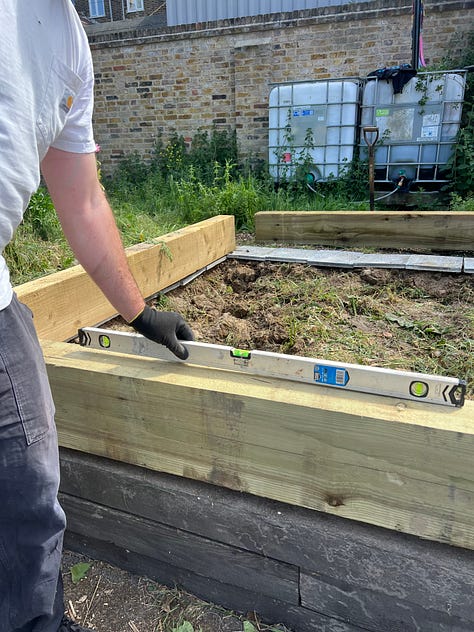

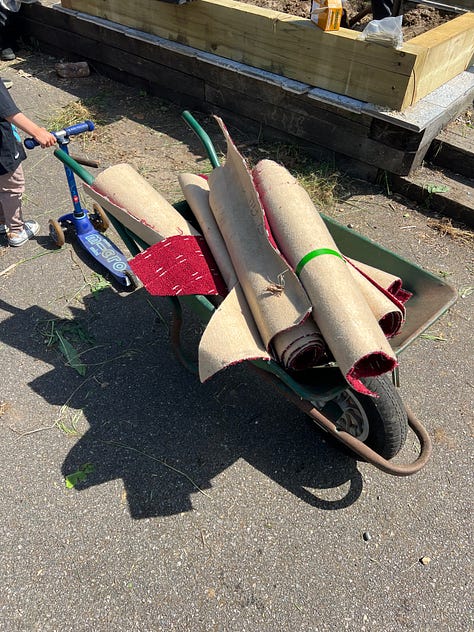
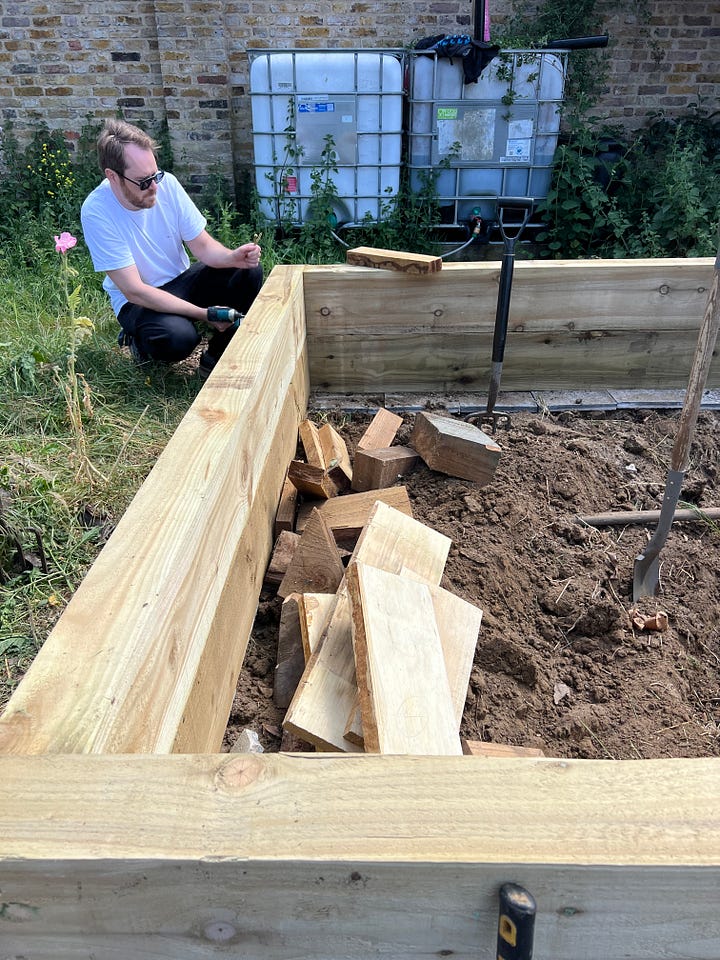

It was all hands on deck, as the ground needed digging down, the base needed levelling, and some plants we loved like our self-seeded sedum needed to be potted up and moved if they were at risk. Thought was given to how best to preserve the timber by helping water to run-off the base during rainfall. We also wanted to ensure that our smaller visitors couldn’t immediately access the water either. We used 2 layers of heavy duty DPM, sandwiching old wood offcuts and carpet in-between to create levels, then added gravel, but not before some incredibly fun power tool work.
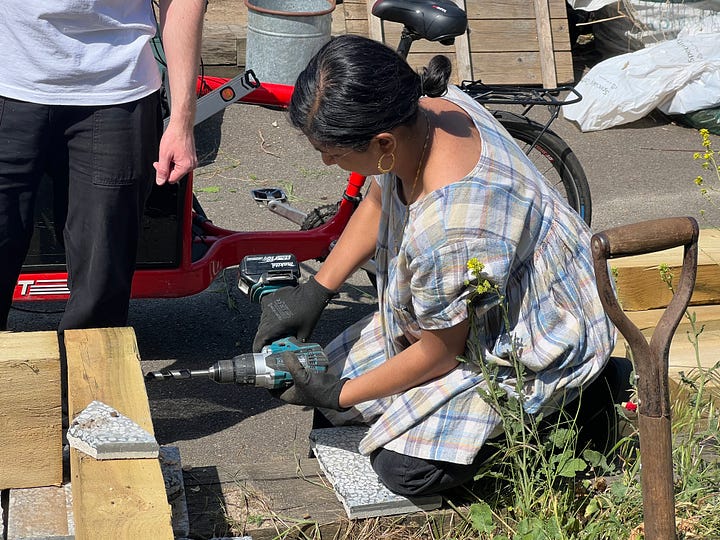
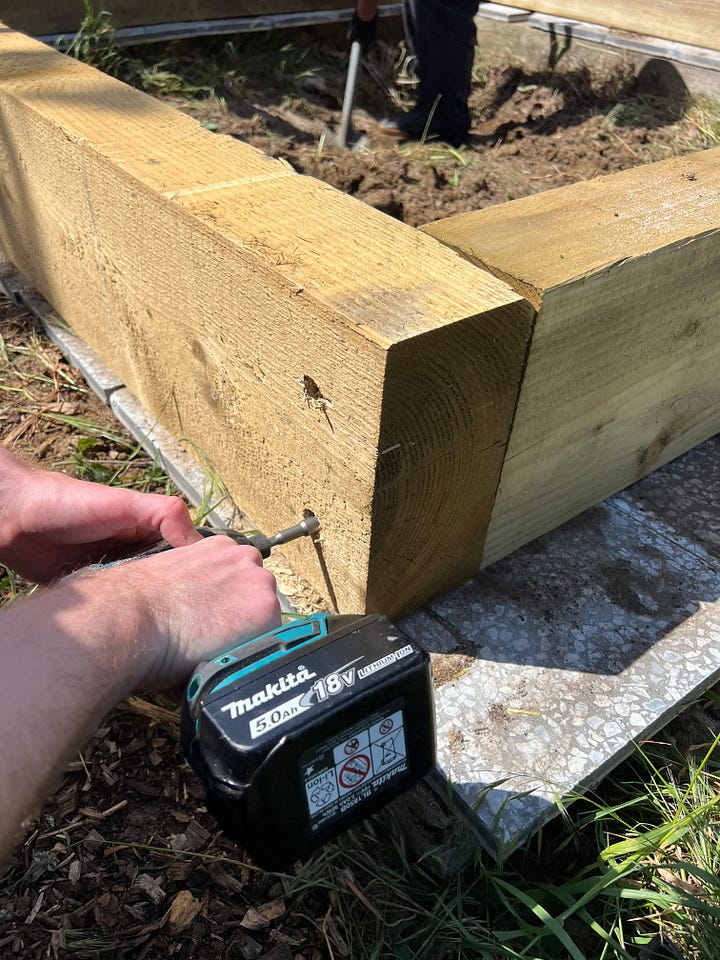
We’d have preferred to use rainwater to fill the pond, but Jon did the math - it would’ve taken us 72 hours or so of constant manual siphoning. So instead, we filled from the tap and Jenny dechlorinated the water with a nature-friendly tap water treatment.
One of our volunteers made a fantastic ramp to aid wildlife getting in and out of the water. Just outside the community garden gate, the London Plane tree next door had gifted us a fallen branch that was the perfect size to straddle the pond, dipping gracefully into the water in the centre.

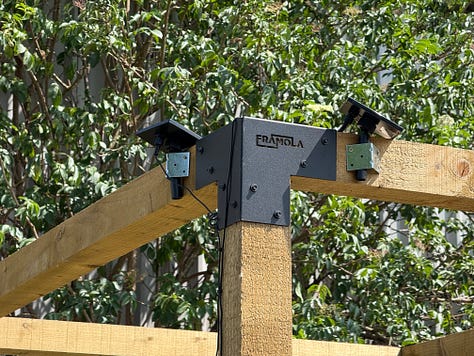
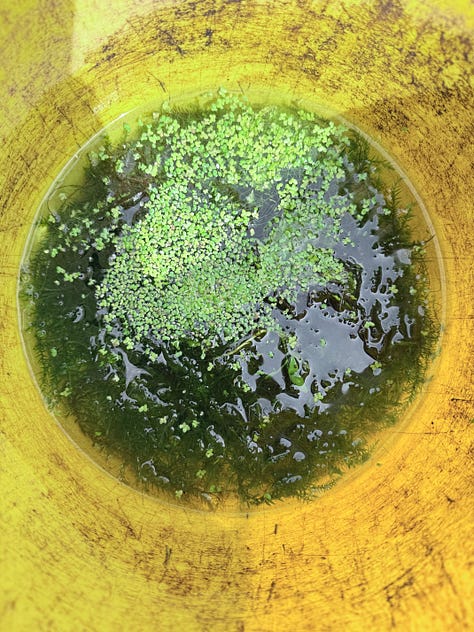
After a few hot and humid days and with no pond snails yet to deal with it, the algae was blooming, so we added two solar powered pond pumps with air stones to help with oxygenation. We added (kindly donated) water milfoil and frogbit, figwort and water mint too.
Next steps will be bringing in some more pond plants, and raising some of the levels with blocks or bricks for marginal plants like marsh marigold and loosestrife.
We’ve already seen some tiny new life in the water in the form of mosquito, midge and hoverfly larvae, so the food chain has begun! Who knows, perhaps we’ll even spot a dragonfly this summer. We can’t wait to see it evolve.
Natural pest control
Our broad beans have been a huge hit this year, especially with the bugs. Despite the cloud of black aphids dotted over the stems and leaves, the beans themselves are absolutely fine huddled inside their smart little jackets. We’ve had fun with some of our younger volunteers shelling the beans!
We’ve also been enjoying the incredible number of ladybirds attracted to the beans (or rather the aphids) - ladybirds in all variation of colours and life stages, native and non-native.
With over 100 variation in appearance, the Harlequin ladybird in particular is a fun and striking sight. However, it is classed as an invasive species in the UK. Native to Asia, it first arrived around 2004. It’s been highly successful due to its rapid spread and can be found in most areas of the UK now. It eats more, breeds more, and has no qualms about pushing the native competition out. There is concern that the Harlequin ladybird's impact on native ladybird populations may be significant. The “grey squirrel” of the ladybird family, if you will.
Check out this handy visual guide to the ladybird species you might find across the UK from BBC Wildlife:
Spinning around
And finally, maybe you already know the joys of using a rotary compost sifter over a traditional riddle (a bit niche, I know), but we used one for the first time at the garden during May to refine our glorious home-made compost with more efficiency.
What a difference it makes! I can tell you that, personally, my back is much happier for the switch-up. We’ll be using it as our primary sifting tool from now on at Leyton Boundary Garden to help us sift even more, even faster.
The things we get excited about, eh?




